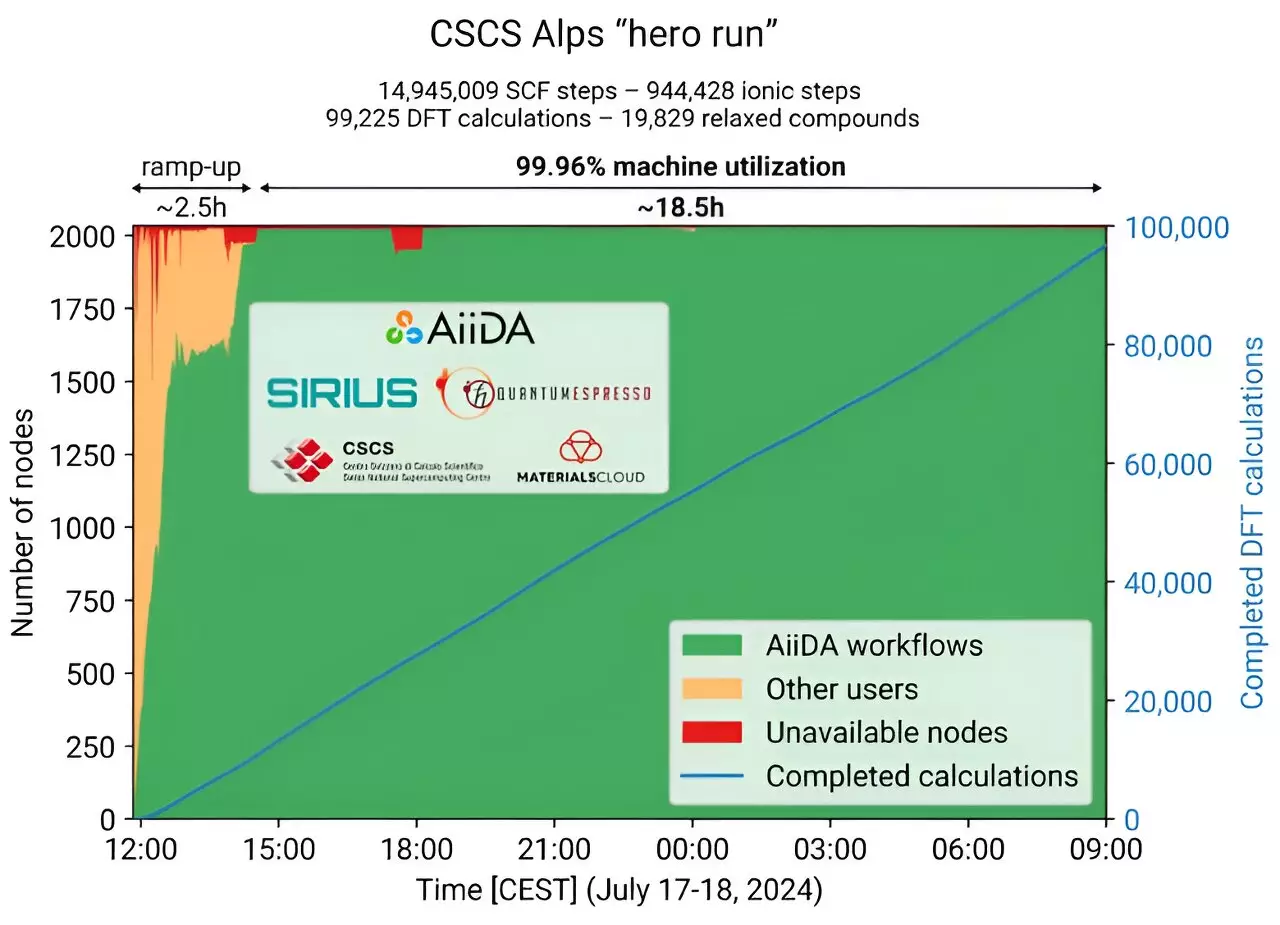In what can only be described as a groundbreaking endeavor in computational materials science, the NCCR MARVEL team at the Swiss National Center of Competence in Research achieved a remarkable feat on the newly operational Alps supercomputer. This significant computational run took place over a 20-hour span, showcasing the power of the Alps and the sophistication of Swiss-developed software tools. Officially inaugurated on September 14, 2024, the Alps supercomputer boasts an impressive computational infrastructure primarily housed at the Swiss National Supercomputing Center (CSCS) in Lugano, Italy. This ambitious undertaking not only highlights the capabilities of one of the world’s most advanced computing systems but also sets a new benchmark for high-throughput materials discovery.
The NCCR MARVEL team, led by Giovanni Pizzi and comprising talents such as Marnik Bercx, Michail Minotakis, and Timo Reents, are part of a larger initiative dedicated to exploring and discovering materials for a variety of applications. The team’s endeavor involved a so-called “hero run,” a dedicated time slot that allows exclusive access to the supercomputer. This opportunity enabled them to leverage the full power of Alps, running their extensive simulations and showcasing their technical proficiency in managing immense computational loads.
At the heart of this computational marathon was the open-source software tool AiiDA, designed to automate the complex calculations necessary for simulating material properties. The NCCR MARVEL team aimed to demonstrate AiiDA’s capability to effectively utilize the Alps supercomputer’s extensive resources. Specifically, they aimed for high-throughput calculations involving thousands of unique material structures stored in a database, allowing for extensive parallel processing.
Bercx articulated the team’s objective, expressing a desire to show that AiiDA could effectively manage numerous workflows in conjunction with the enormous computing power provided by Alps. By interfacing AiiDA with the supercomputer, researchers could simultaneously run multiple calculations, a necessity for high-throughput experiments aimed at discovering new materials, including potential candidates for advanced batteries.
The team utilized an enhanced version of Quantum ESPRESSO, a widely recognized software suite for quantum simulations of materials, optimized through the Sirius library. The latter was developed under the auspices of the NCCR MARVEL initiative at CSCS to maximize the efficiency of the Alps supercomputer’s graphical processing units (GPUs). The advanced algorithms embedded within these tools contributed crucially to improving the overall success rate of simulations.
Once the team received authorization from CSCS for their run, they initiated the job scheduling process, distributing their tasks among the vast array of computational resources available at Alps, which includes 8,132 GPUs and hundreds of thousands of CPU cores. What followed was a systematic execution of high-throughput tasks, with AiiDA monitoring the computational status of each job, ensuring that when one finished, another could seamlessly take its place.
The overnight run proved successful, with the team managing to maintain stable utilization of the supercomputer’s resources, achieving an astounding 99.96% efficiency. This performance is not just a testament to the powerful infrastructure of Alps but also showcases the robustness of AiiDA in workflows designed to handle extensive data and simulations. Over the course of the run, nearly 100,000 calculations were completed, corresponding to the electronic properties of 20,000 distinct crystal structures sourced from the AiiDA database.
Minotakis noted the strategic decisions made in selecting structure sizes, explaining that medium-sized structures were chosen to maximize computational efficiency. The team calculated fundamental properties such as magnetic characteristics and the geometric configurations of these materials, providing valuable insights for future research.
Upon completion, the results of this ambitious undertaking are set to be shared as FAIR (Findable, Accessible, Interoperable, Reusable) data and made public through the Materials Cloud, enhancing the existing database of crystal structures. The collaboration represents not only a significant scientific advancement but also a push towards collaborative efforts in research that promote transparency and knowledge sharing.
Pizzi encapsulated the achievement, emphasizing the remarkable synergy between the capabilities of the Alps supercomputer and AiiDA’s high-throughput functionalities. This effort effectively consolidated, in less than a day, computational tasks that would typically demand a year’s worth of computing time on previous-generation supercomputers.
As the field of computational materials science evolves, the work done by NCCR MARVEL signifies a pivotal step towards unlocking new materials technologies for the future, potentially transforming industries reliant on advanced materials for innovation.

